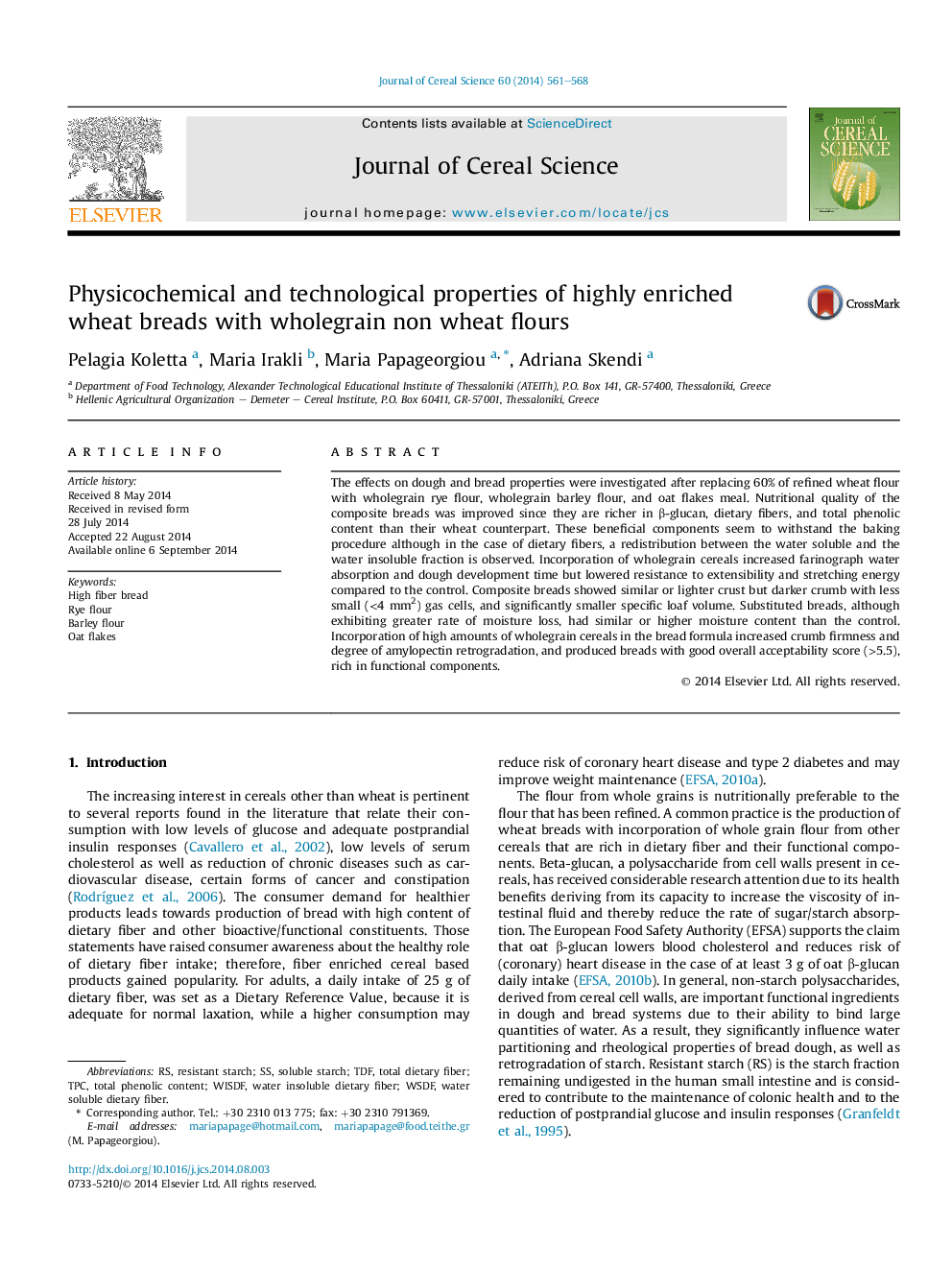| Article ID | Journal | Published Year | Pages | File Type |
|---|---|---|---|---|
| 4515759 | Journal of Cereal Science | 2014 | 8 Pages |
•60% substitution increased crumb firmness and degree of amylopectin retrogradation.•Composite breads are richer in β-glucan, dietary fibers, and total phenolic content.•Baking increased the soluble fraction of total dietary fibers present in the flours.•We found no significant differences for TPC between raw materials and baked products.
The effects on dough and bread properties were investigated after replacing 60% of refined wheat flour with wholegrain rye flour, wholegrain barley flour, and oat flakes meal. Nutritional quality of the composite breads was improved since they are richer in β-glucan, dietary fibers, and total phenolic content than their wheat counterpart. These beneficial components seem to withstand the baking procedure although in the case of dietary fibers, a redistribution between the water soluble and the water insoluble fraction is observed. Incorporation of wholegrain cereals increased farinograph water absorption and dough development time but lowered resistance to extensibility and stretching energy compared to the control. Composite breads showed similar or lighter crust but darker crumb with less small (<4 mm2) gas cells, and significantly smaller specific loaf volume. Substituted breads, although exhibiting greater rate of moisture loss, had similar or higher moisture content than the control. Incorporation of high amounts of wholegrain cereals in the bread formula increased crumb firmness and degree of amylopectin retrogradation, and produced breads with good overall acceptability score (>5.5), rich in functional components.
